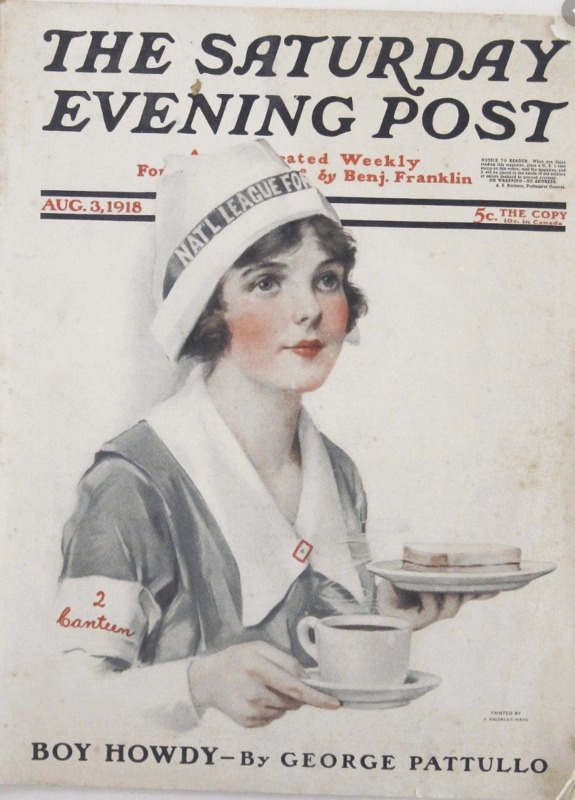1910s: Activism and World War I
The 1910s saw the continuation of Progressive Era movements and reforms on top of the changes that resulted from World War I. The 1900s activism carried over to this decade, with women’s issues such as suffrage and birth control playing an important role in changing societal norms around these topics. Alice Paul, Margaret Sanger, and Carrie Chapman Catt became central figures in advancing rights for women, and while many of the traditional norms from the previous decade persisted in terms of women’s spaces, sexuality, and class there was a distinct air of change during this time (Reeves 48). Women temporarily entered the labor force to fill the vacancies left by the men who went to war, occupying positions in factories and agriculture to increase wartime production (Reeves 71). The war period coincided with the Great Migration, a movement where an influx of African-Americans from the South began moving to urban centers in the North looking for work. This resulted in many African-Americans, including women, being given work opportunities, although it is important to note that white women were given better opportunities than women of color (Hesse-Biber and Carter 509).
The 1916 cover of Today’s Magazine reflects this female activism, albeit in a subtle way. It depicts a woman sitting amongst a bed of multicolored pillows while wearing a long white coat and a black fur hat. She drinks a cup of tea and eats what appears to be a cracker, staring at the viewer with a look of slight annoyance. Her dress is an appeal to the popular fashion trends of the time: “fuller silhouettes” and “simplified designs and military embellishments such as metal buttons and epaulets” (Hill 137). The use of “military embellishments” specifically shows acknowledgment of World War I, but the extravagances of the image seem to go against the nationwide wartime effort to reduce the use of resources valuable to the production of war materials. This almost rejection of rationing suggests that the image wants viewers to understand that, while war has taken precedence in the minds of Americans, women’s issues should not be forgotten and should continue to be discussed.
The use of colors in the image further support this message of women’s rights. During the early 20th century suffragists used fashion to promote their agenda, wearing green, white, and violet because “the first letters of each color -G, W, V- was shorthand for give women votes” (Pham 247). These three colors are very visible in the image: the pillows contain green and violet and the woman is wearing a long white coat. This subtle activism is targeted at women who may be hesitant about outwardly joining the suffrage movement but who still support its mission. The use of tea in this image harkens back to the feminization of “tea time” while also reclaiming this movement for suffragists. By having the female symbol of suffrage drink tea, the image is sending the message that women can still participate in drinking tea with female friends, but that women’s rights issues can come into the conversation. The suffrage movement is thus portrayed in a more casual light; the woman can drink tea surrounded by pillows and still take part in the fight for equality.
The 1918 cover of the Saturday Evening Post focuses more on appealing to those concerned about issues regarding World War I. It depicts a woman wearing a grey and white uniform and holds a cup of tea in one hand and a sandwich in the other; her hat reads “Nat’l League For” before being cut off, implying that she is working in a war setting. The fact that a woman is being portrayed as holding a war job reflects the increase in women involved in the war. Their roles were limited to non-combat jobs like nurses and ambulance drivers, but these roles still provided a valuable service to the overall war effort. Being a wartime nurse is a stressful job, yet the woman on the cover is still shown wearing heavy makeup. This plays into the idea that a woman can only be taken seriously when they are perceived as “beautiful,” insofar as she followed society’s expectations of what was considered beautiful. Having the nurse wear makeup sends the twofold message that women should always look presentable at work and that presentable means adopting a highly feminized style.
The fact that the nurse is holding a cup of tea and a sandwich subconsciously reinforces the idea that women are meant to serve men. The calm and patient look on the nurse’s face gives the impression that she is ready to serve, and while this could mean service to her country it also means service to the male soldiers. The significance of the tea is that because it is being used as an outlet for female service it contributes to the overall feminization. The precedent set by tea’s history is being used here to create what Ramamurthy calls an “affect,” or the unconscious response one has to an image before they can articulate their thoughts. She says that advertisements “‘speak’ to us in complex ways urging us to identify with the subject of the images,” and in this case the image is saying that tea is reserved for women (368). For a woman viewing this image she may feel empowered seeing another woman partake in the war effort, but unconsciously she is internalizing the idea that she is meant to serve men and that making a cup of tea is a way to do that.


